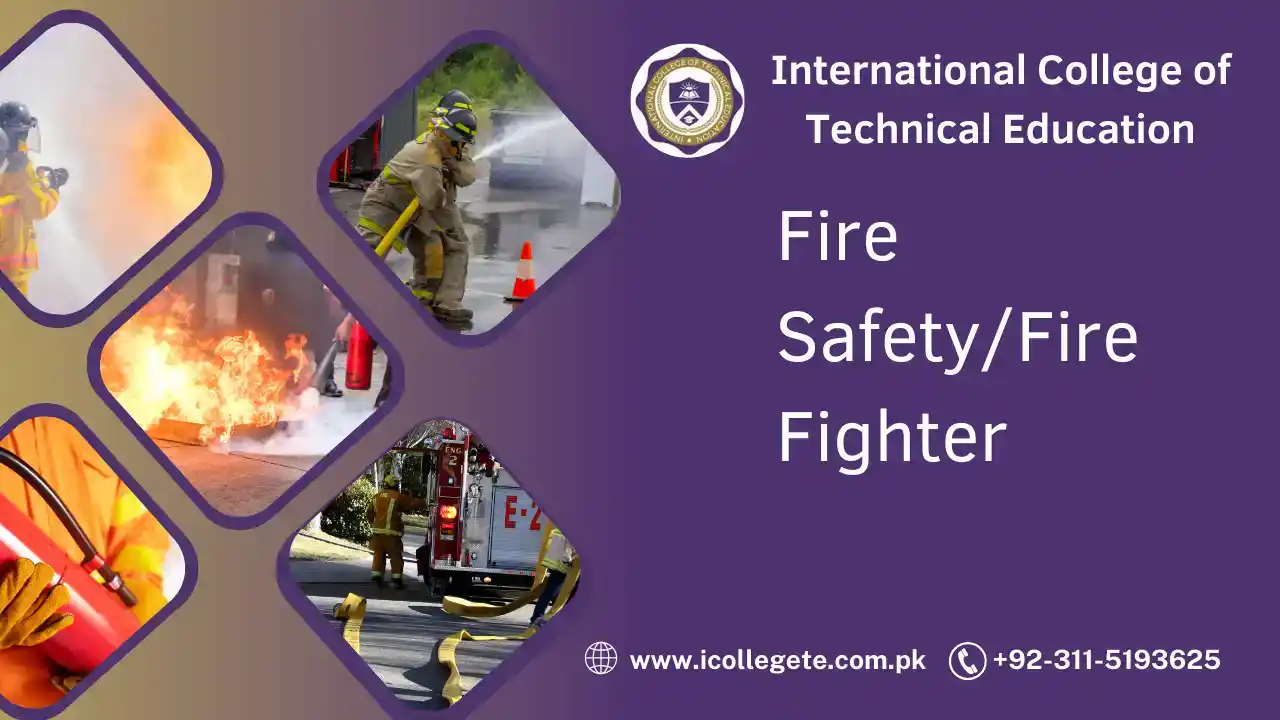Fire safety is one of the most essential aspects of ensuring public safety and preventing catastrophic loss of life and property. With increasing urbanization and industrial growth, the role of firefighters has never been more crucial. In Rawalpindi, one of Pakistan’s bustling cities, the demand for skilled fire safety professionals and firefighters is growing.
The Fire Safety and Fire fighter Course in Rawalpindi is designed to provide participants with the fundamental skills, knowledge, and practical training needed to handle fire emergencies effectively. The course prepares students to understand fire behavior, emergency response protocols, safety standards, and advanced firefighting techniques. It equips learners with essential first responder skills, making them capable of tackling real-life fire emergencies with confidence and efficiency.
Course Overview
This comprehensive training program combines both theoretical knowledge and practical skills development, allowing students to immerse themselves in the world of fire safety and firefighting. The course covers essential areas such as fire prevention, emergency management, rescue techniques, and hazardous material handling. The curriculum is designed to meet international safety standards while also addressing the specific needs of fire services in Pakistan.
The course typically involves a blend of classroom learning, on-site training, simulations, and practical exercises to ensure a complete understanding of the subject matter. Students will be exposed to real-life situations and scenarios that will help them build confidence in making quick, informed decisions during emergencies.
Study Units
- Introduction to Fire Safety and Firefighting
- Understanding the role of a firefighter
- History of firefighting and fire services
- Overview of fire safety regulations and standards
- Fire Behavior and Fire Chemistry
- The fire triangle: heat, fuel, and oxygen
- Classifications of fires
- Fire extinguishing agents and their applications
- Fire Prevention and Safety Protocols
- Risk assessment and hazard identification
- Safety measures for homes, offices, and industrial settings
- Fire safety codes and emergency exits
- Firefighting Techniques
- Types of fire extinguishers and their usage
- Hose management and water-based firefighting techniques
- Using breathing apparatus and protective gear
- Rescue Operations and First Aid
- Search and rescue techniques
- Emergency medical response and triage
- CPR and basic first aid for fire victims
- Hazardous Materials and Chemical Fires
- Understanding hazardous materials
- Special techniques for dealing with chemical fires and spills
- Decontamination procedures
- Firefighting Equipment and Tools
- Knowledge of firefighting apparatus, tools, and their maintenance
- Handling rescue tools such as ladders, ropes, and cutters
- Use of modern firefighting vehicles
- Fire Incident Command and Management
- Chain of command during fire emergencies
- Coordinating with other emergency services
- Incident report writing and documentation
Learning Outcomes
By the end of the course, participants will be able to:
- Understand fire behavior and how to prevent and control fires.
- Apply safety protocols to minimize fire hazards in various environments.
- Operate firefighting equipment and extinguish different types of fires.
- Carry out rescue operations and provide first aid to victims.
- Respond effectively in emergency situations and follow the correct fire safety procedures.
- Understand the principles of hazardous materials management during fire incidents.
- Work as part of a firefighting team and take on leadership roles in emergency situations.
Course Benefits
- Enhanced Safety Knowledge: The course provides a solid foundation in fire safety, ensuring that individuals are better prepared to handle potential fire hazards in any environment.
- Skill Development: With practical sessions and hands-on training, students will gain valuable skills in firefighting, rescue operations, and emergency medical response.
- Career Opportunities: As the demand for fire safety professionals grows, completing this course opens doors to various career opportunities in fire departments, industrial safety, and emergency services.
- Increased Public Safety: Graduates of this course play an essential role in safeguarding lives and properties, contributing to community safety and well-being.
- Personal Growth: Firefighting is a noble profession that instills discipline, teamwork, leadership, and resilience. It’s a career that offers personal satisfaction and the chance to make a real difference.
Who Is This Course For?
This course is ideal for:
- Aspiring Firefighters: Individuals who want to become professional firefighters and work in fire departments or other emergency services.
- Safety Officers: People working in industries, schools, hospitals, and other establishments where fire safety is crucial.
- Security Personnel: Those responsible for ensuring safety in large residential or commercial buildings.
- First Responders: Paramedics, rescue workers, and police officers who need to be prepared for fire-related emergencies.
- General Public: Anyone interested in learning more about fire safety to protect themselves and their families.
Future Progression for This Course
Completing a Fire Safety and Firefighter Course in Rawalpindi can serve as a stepping stone to more advanced training and career opportunities. Some possible career paths and progression include:
- Joining a Fire Department: Graduates can apply to become professional firefighters with local fire departments in Rawalpindi or other cities across Pakistan.
- Safety Consultancy: With further education, individuals can work as fire safety consultants, helping businesses develop fire safety plans and implement fire prevention measures.
- Specialized Training: Advanced courses in areas like fire investigation, hazardous materials handling, or emergency management can further expand career options.
- Leadership Roles: After gaining experience, individuals can move into leadership roles, such as fire chief, incident commander, or fire safety supervisor.
- Teaching and Training: Experienced firefighters can teach fire safety courses, sharing their knowledge and expertise with the next generation of fire safety professionals.
The Fire Safety and Firefighter Course in Rawalpindi is not just about learning how to fight fires—it’s about preparing individuals to protect lives and property in emergency situations. It’s an opportunity to develop essential skills, gain life-saving knowledge, and embark on a rewarding career in an ever-evolving field. Whether you’re looking to start a career in firefighting or simply want to learn how to keep your home and workplace safe, this course provides all the tools and training you need.







